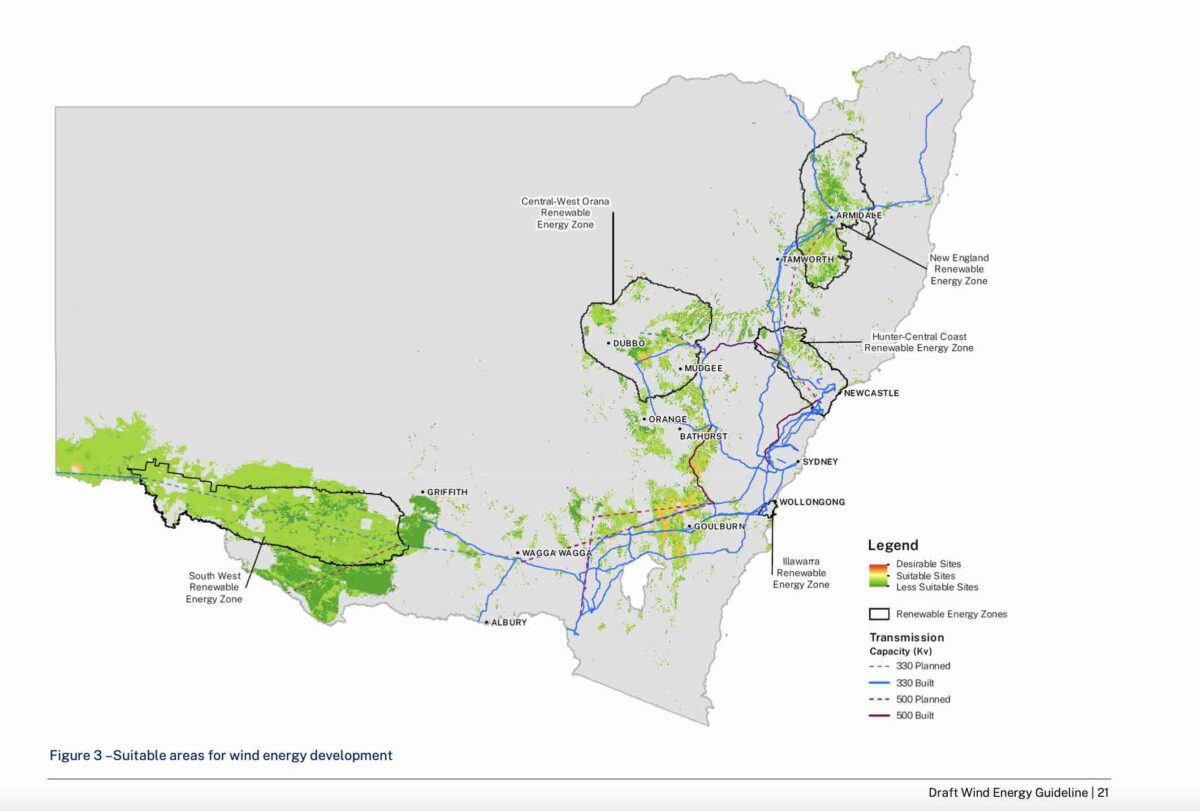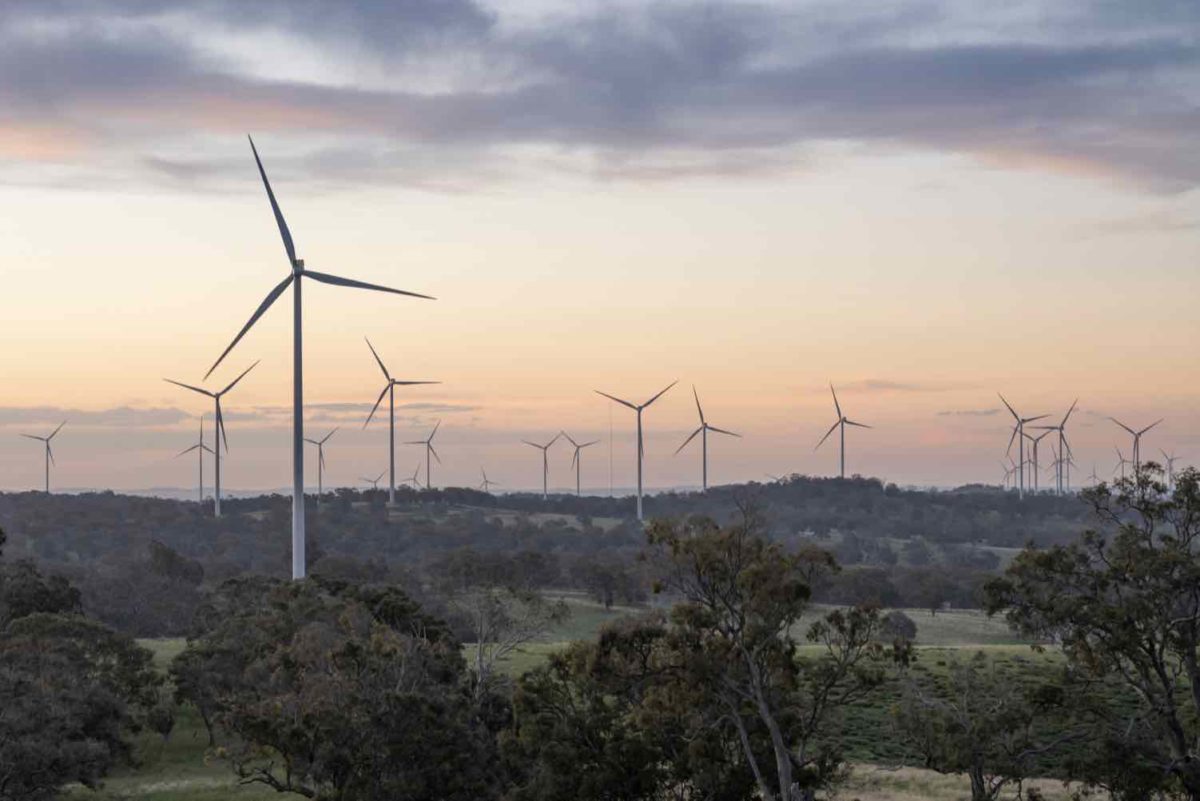Wind and solar project developers could face hefty fees under new guidelines released by the state government in an attempt to fast track the stalled planning approvals process, and ensure social licence at the same time.
The state’s ambitious renewable energy infrastructure roadmap to replace its ageing coal generators within the next decade is threatening to stall because of the lack of approval of new projects, particularly wind farms, and growing opposition to new projects, particularly transmission lines.
The opposition has been fuelled by the federal Coalition government, along with fossil fuel lobby and pro-nuclear ideologues, and has included huge amounts of disinformation and fake reports – particularly on offshore wind – but it is threatening to reach crisis points.
NSW energy minister Penny Sharpe on Tuesday released new draft guidelines that the government hopes can accelerate the planning approval process for wind, solar and transmission infrastructure.
The most striking of the new proposals are a guideline rate for “benefit sharing”, which would amount to $850 per megawatt per annum for solar farms (or about $85,000 a year for a 100MW project), and $1,050 per megawatt per annum for wind farms (or about $105,000 a year for a 100MW project).
These payment are over and above any deal struck between project developers and landowners who will actually host the wind turbines or solar arrays.
The government estimates that this will deliver estimated benefits of up to $413 million to the community over 25 years.
Other proposals include declaring solar projects Critical State Significant Infrastructure if they include a significant energy storage system. The draft cites a “delivery capacity” of 750 megawatts or more as an example.
The draft guidelines also provide clarity on how noise, visual and other community impacts should be evaluated and managed through the development assessment process.

The government has also released a map showing its idea of desirable, suitable and less suitable sites.
The desirable and suitable sites – at least for solar in the map above – more or less follow existing and proposed transmission lines and renewable zones, with less suitable sites gathered around some population centres.

However, the map looks less inviting for wind energy projects, with few if any areas deemed “desirable” for new wind projects, and most of the state blotted out as “less suitable.”
See ours separate story: NSW blots out nearly entire state for wind projects – few areas deemed “desirable” for turbines
Sharpe says the draft guidelines are aligned with recommendations made by the Electricity Supply and Reliability Check Up and the NSW Agriculture Commissioner’s report on renewable energy generation and agriculture.
“We want communities and industry to provide feedback so we can crack-on with delivering the renewable energy NSW needs,” Sharpe said.
The minister for Planning and Public Spaces Paul Scully said the planning systems needs to evolve to ensure that energy generation and transmission infrastructure can be delivered.
“These proposed new guidelines will support faster decisions and clearer rules that will increase certainty for the industry and communities,” he said.
Feedback is sought from industry, councils and residents before Friday, December 15, with a review and finalised guidelines to be completed in early 2024.










